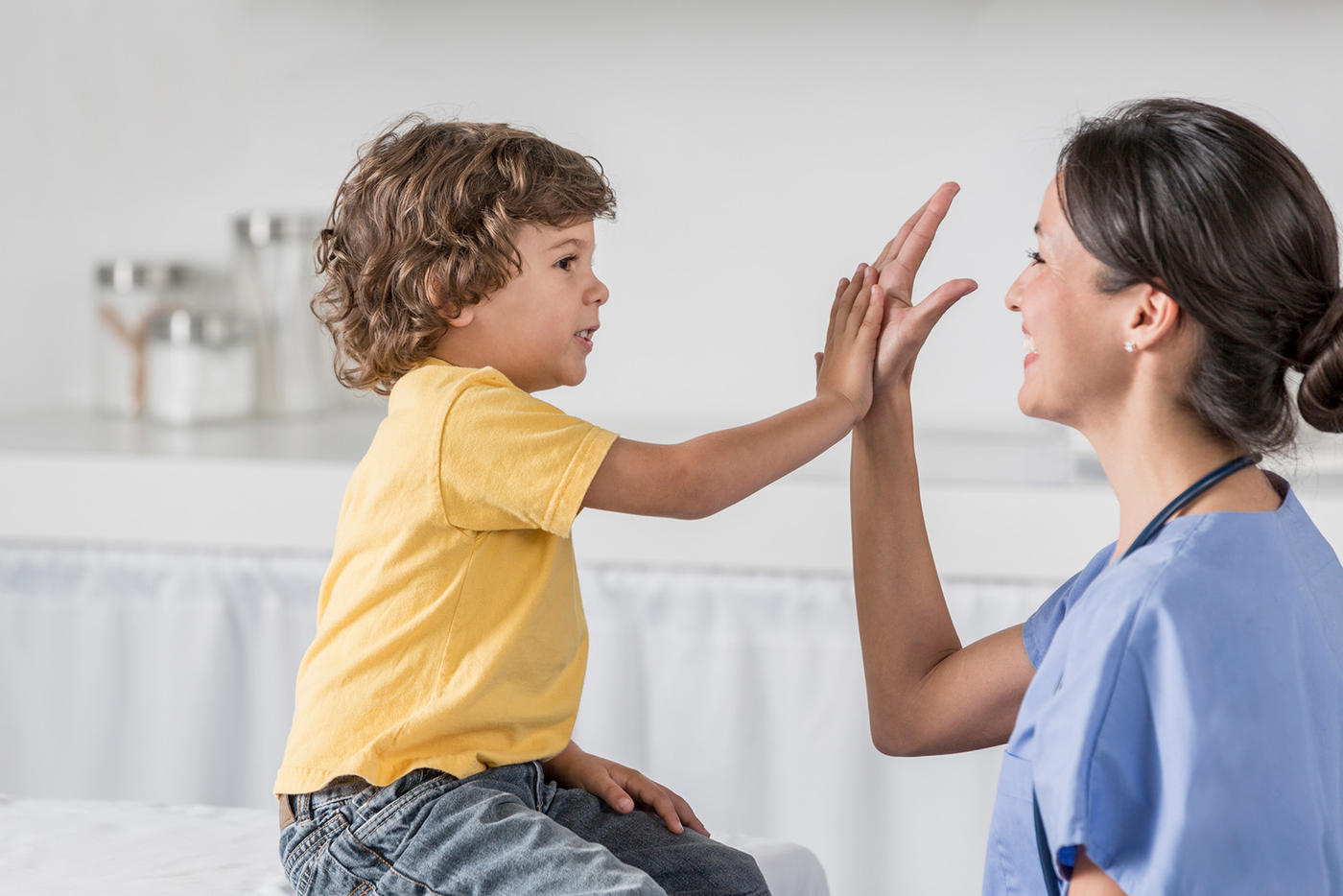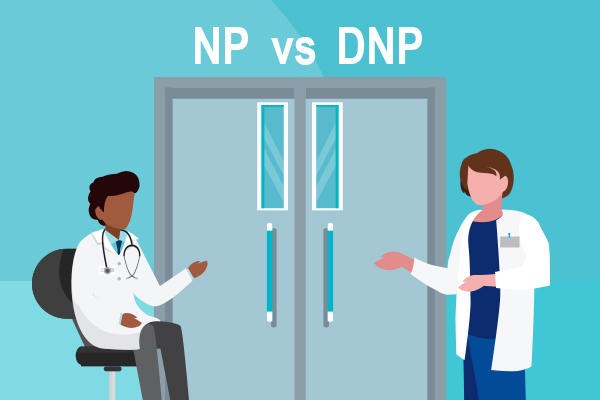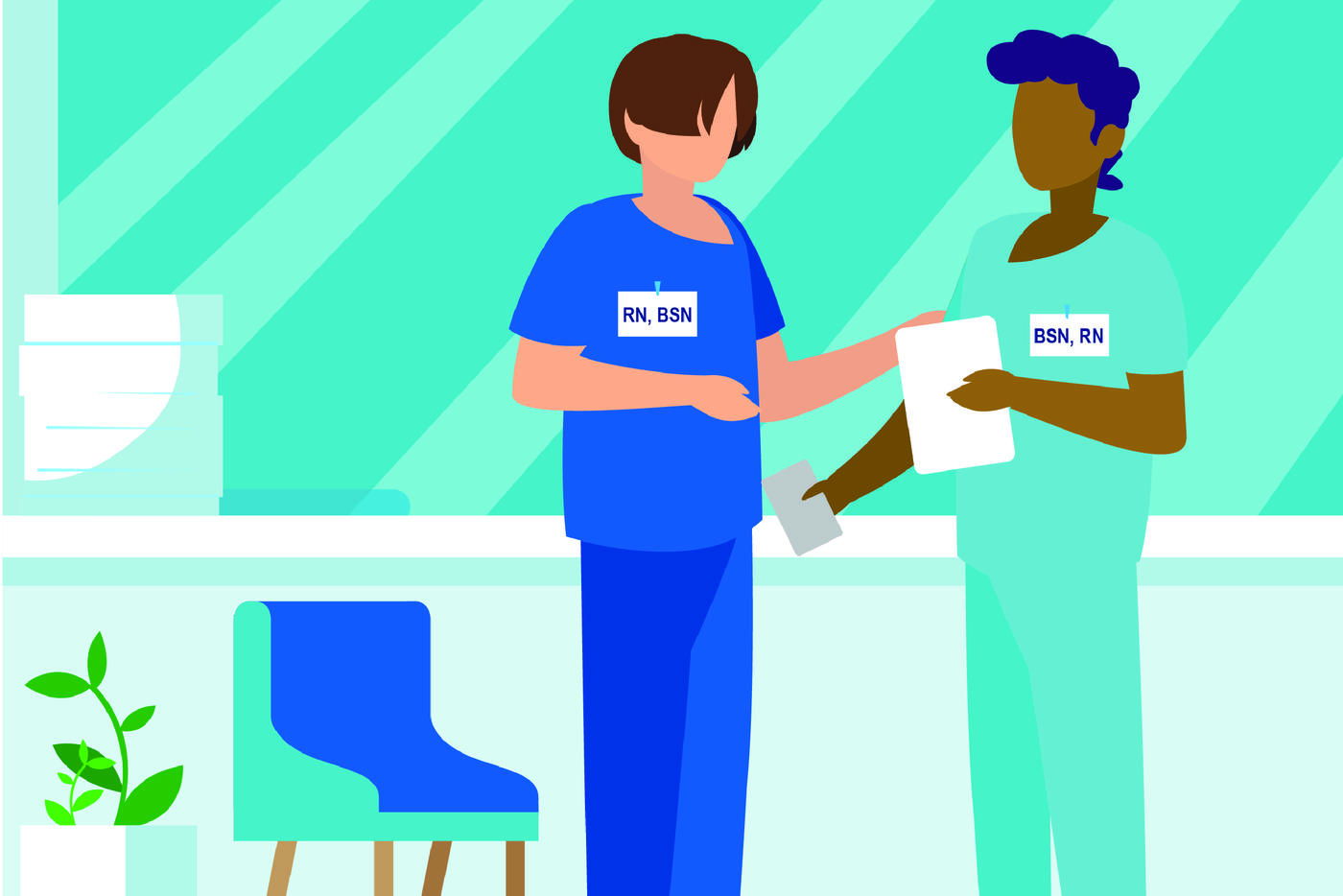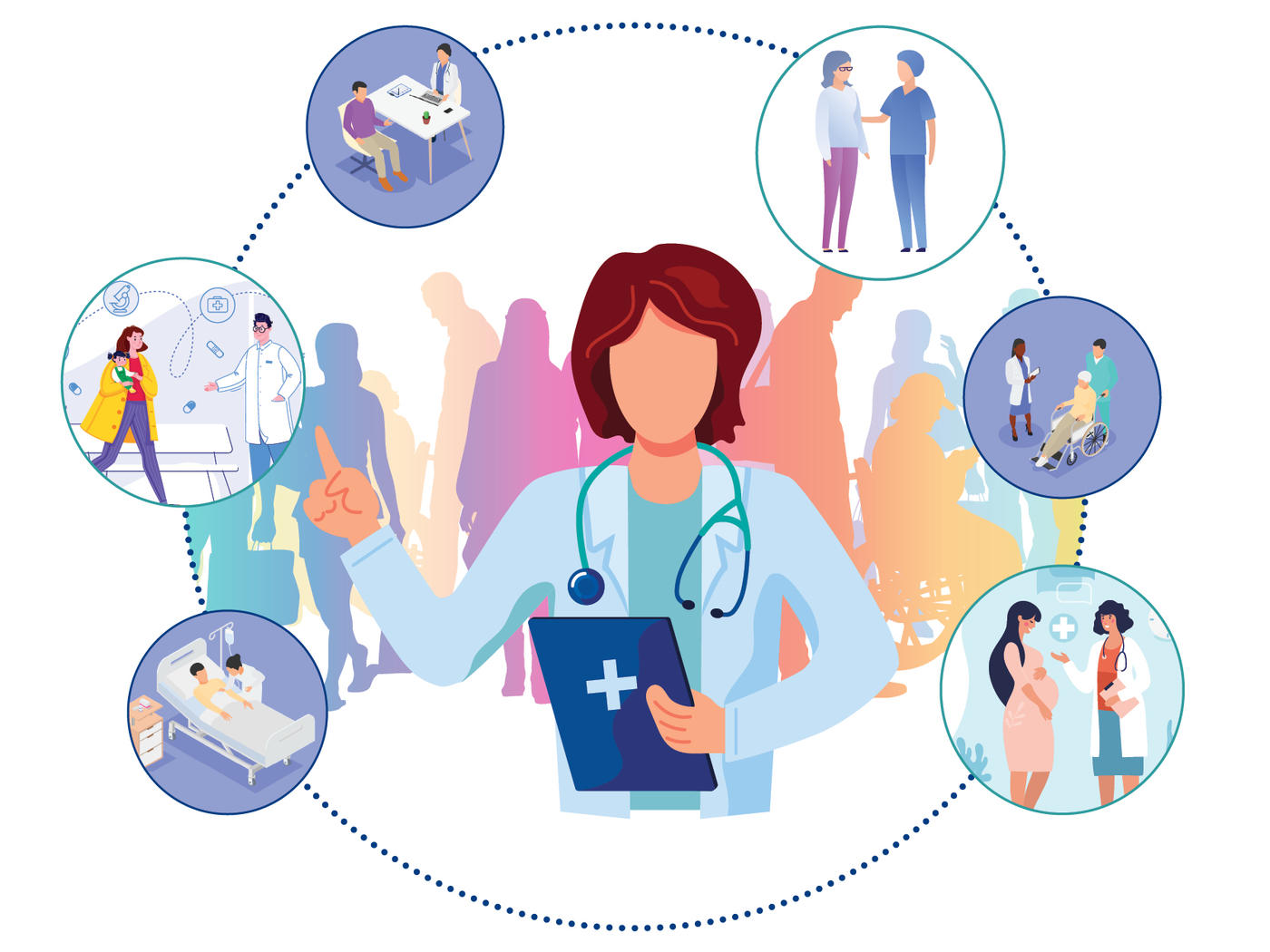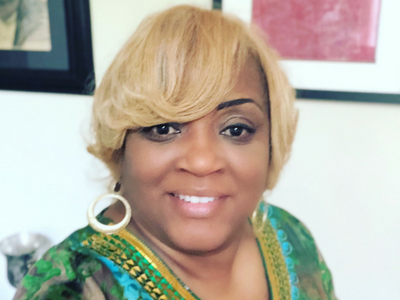Featured
Tags
Share
- Home / Blog / Nursing Today / Private Practice Doctor and FNP Preceptor Talks Working the COVID-19 Front Lines
Private Practice Doctor and FNP Preceptor Talks Working the COVID-19 Front Lines
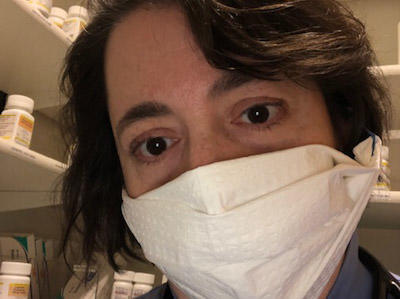
Since March, COVID-19 has nearly pushed the American healthcare system to a breaking point. But nurses, doctors and healthcare professionals on the front lines at hospitals, in private practices and nursing homes who are stepping up, staying the course and heeding the call are united by a commitment to care for patients during this catastrophe.
At a time when the pandemic has caused widespread chaos across the country, shuttering restaurants, stripping tens of millions of Americans from their jobs, the stay-at-home orders have grounded to a halt elective and non-urgent surgeries and scared some patients from coming in for needed care. Yet, private practice doctors and small clinics play a vital role in treating coronavirus patients who would otherwise show up at the hospital, and care for people with chronic diseases like diabetes and asthma.
With the COVID-19 landscape changing daily, we reached out to Gail Bryant, MD, who runs Wellness365, a Healthcare club and family medicine practice that employs seven healthcare workers in Arlington Heights. Dr. Bryant is a preceptor for Chamberlain’s MSN- Family Nurse Practitioner specialty track. Her answers to our questions here:
1. What drove your commitment to continue to keep your practice open for patients?
A lot of my colleagues closed their offices, converted to “telemedicine” only and my hospital (as most others) closed off many “non-COVID” services. The list of dead-ends to care went on and on. Some said it is because they didn’t want to put themselves at risk. Some said it is because they didn’t want to expose patients to risk. Some said they didn’t want to expose their staff to risk.
One of the reasons I remain an independent practice is so I don’t have to comply with anyone’s management protocols except my own. There is no right answer here, the risks are very real. But we have also been at risk from HIV and TB and MRSA and polio.
I was not going to be able to look myself in the mirror if I wasn’t there for patients when they most needed their doctor. And it doesn’t matter if I thought I was “being there for them,” the only perception that counts is the patients’.
2. What are the protocols you have put in place?
Universal Precautions and basic barrier methods and simple cross-contamination prevention. It’s very simple, really. When the whole pandemic broke, and we finally got the critical piece of news I needed (confirming human-to-human transmission via respiratory droplet spread), that made it easy. Once you know how it spreads, you can figure out how to lock down your site and keep it “clean.”
We started with controlled access. We locked our suite door and reassigned a staff member to be the “doorman” at all times. That way, we find out who wants to come in (and why) before they are on the premises. We can then decide if they get in or not.
Delivering a package or picking up a prescription does not require you to be physically in the office, we can hand-off at the door. So that limits one source of contamination. We then decided that it you are going to be allowed in, we needed to contain your respiratory tract and your hands, since those are the source of transmission of this virus.
So we have everyone alcohol-wipe their phone (everybody uses their phone constantly), then give them a mask and gloves at the door, watch them put them on to ensure correct usage, and then let them in with strict instructions that their mask and gloves stay on the entire time they are in the office, unless told directly by one of us to take it/them off.
On being escorted out after they have conducted their business, they are instructed to demask and deglove outside our door, with a trash receptacle right there. All staff members in direct contact with foot traffic must be masked and/or gloved, depending on the nature of the encounter. This was a pretty easy protocol to come up with, we devised it at a staff meeting and still had time for lunch. We all tried to punch holes in it, looking for weaknesses, and it seemed solid. So far, it has proved to work well.
3. Are you getting lots of patients coming in saying they think they have COVID? How many of them do?
We sure are! That led to the second part of our protocol, which is “protecting the waiting room.” If a COVID case is in the office, you won’t know it until testing comes back, right? And testing wasn’t available to us, for a long time. So we decided that anybody who was even possible COVID (known exposure, suspected exposures or any flu-like symptoms) would have to be on the “Parking Lot Protocol.” This means that the patient has to call us from the parking lot when they get there. We glove/mask and go out to their car. The patient containment procedure is the same, and they are escorted in via a back door, going directly to one of the treatment rooms that we designated for this purpose. Thus, there is no chance of them lingering in the waiting room or the halls, possibly contaminating our site despite barrier precautions. We’ve had quite a few cases.
4. How are you treating COVID-positive suspected and/or positive patients?
We created a “outpatient COVID” protocol. The only recognized treatment at this time is supportive and symptomatic care. We give them an incentive spirometer, strict instructions for breathing exercises (to prevent the micro-lung collapses that lead to the respiratory failures), a pulse oximeter for monitoring their oxygen levels, fluid instructions, quarantine instructions and anti-pyretic instructions.
They are instructed that they must check in with daily email updates on their condition, and if we don’t hear from them as scheduled, we will be looking for them and not stop until we have located or heard from them. All of this is listed out in a templated email that we send to them once they are deemed to be “on protocol.” We see them back every 2-3 days, until they are safely past day 12 since symptom onset. The people that “crash” seem to do so by day 10, from the reading I’ve done.
5. You mentioned that all of your COVID patients you have been able to successfully treat at home? What are you doing that is making this difference?
The above protocol. COVID patients (confirmed or suspected) are scared. They think they are going to die, and that’s how they feel! These viral syndromes make you feel just awful! But scared isolated people feel abandoned, and that does not facilitate healing. By giving them a clear plan of action and the reassurance that we are there for them, not afraid of them, and will take care of them no matter how bad it gets, they are reassured enough to help their bodies heal.
We decided that our metric of success for our protocol would be prevention of ER/hospital utilization, or, if we were doing our job correctly and effectively, they should not need to access the overtaxed hospital system. So far, our protocol has had a 100% success rate for the several dozen patients we have had on it.
6. What have been some of the challenges?
Anger. Our supply chains dried up immediately. The first thing to go was the ability to purchase gloves, masks, sanitizing supplies, etc. I discovered the system of “allocations” which is a nice way of saying that your vendor gets to decide who gets first crack at limited supplies (spoiler alert – it likely won’t be YOU!). I discovered that some people had no problems stockpiling supplies they didn’t need in order to price-gouge, and that other people had no problem selling counterfeit supplies. And I got angry. I knew that the world is generally unfair, but this was a bit egregious. Fortunately, anger is a very powerful constructive force; you can get a lot accomplished with it.
7. Is your volume of patients changing? What is your work schedule like as compared to pre-COVID-19?
It was a bit light for a period in March, when people were too scared to leave their homes for anything. But medical problems have a way of making themselves hard to ignore, and our schedule has been pretty much the same. What has changed is my hospital admissions, I have had only two over the past two months. That is very unusual and indicates that people are ignoring issues that would have sent them to the ER previously.
8. Headlines suggest that COVID has been devastating to primary care and specialty care. Thoughts?
One of the unsolicited critiques I got from another doctor is that there was no point in staying open and paying staff because “patients won’t come in anyway.” That has simply not been the case. We aren’t here because patients want to come in and socialize. We are there because they need us. If you stay open (in a responsible manner), they will come. It is that simple. So if doctors aren’t getting paid, it’s because they weren’t seeing patients. What has been really helpful has been the insurance industry’s decision to reimburse “telehealth” and “digital care.” I’ve been taking care of patients remotely via phone and email for years, without any payment for it. It’s been an efficient way to get the job done, and has been a vital part of my practice. The fact that the rest of the world now has to do it and so it is deemed worthy of payment-for-service is a nice bonus.
9. Working on the front lines of the pandemic, what have you witnessed firsthand about the risk of the virus and the impact of its spread?
The deadliest risk I have seen in this pandemic is the fear about it. Yes, people die from this disease. People die from a lot of diseases, that is what diseases do. Yes, the risk of transmission is very real, and we still don’t know how to predict who will do okay with the illness, and who will do poorly. But the fear is out of proportion to the disease. It’s a bad one, no question there. But violence between people who are scared of the disease and people who are scared of the restrictions, well, that’s a risk of the virus and an impact of its spread that is simply unnecessary and unacceptable.
10. What do you tell patients about their personal risk?
I tell them that they need to be very clear in how they define “safe.” Is anyone ever going to be completely protected against transmission? Probably not, this virus is now in our repertoire of “things that we can get infected with” and that’s not changing. If they are looking for absolute optimization of transmission prevention, best to avoid other people regardless of what government says. But life has to go on, we are a social species that lives in packs. With universal precautions, basic barrier methods and simple cross-contamination prevention (which you all should have been doing anyway), transmission of this virus can certainly be contained within the context of “normal activities.”
11. What about the people who are out there who are ignoring the restrictions, having parties etc.?
We will see your grandmother in the ICU, kid. Hope you feel ok about that.
12. Are you getting patients who aren’t sick but call, or want to come in to get your counsel about how to think about these risks? It seems that COVID is different because unlike other diseases you treat that have data, but with this, is there a clear understanding among the medical community?
Well…that is a complex question. A clear understanding, no. But at its base level, it’s a coronavirus that causes SARS, we’ve seen this before. We just haven’t seen one spread so readily from person to person, and the SARS it causes has some unusual features. So when people say they want “the doctor’s opinion” about this, what they really mean is they want an epidemiologist’s opinion about it. Yes, we get lots of phone calls and emails asking what to do about specific situations. We do the best we can with them, most people are understanding that we don’t really know what is best to do, either. They really just want the human contact.
13. How are you taking care of yourself during this?
We are not just a medical practice, we are an integrated wellness center. So our base practices of regular workouts (we have full facilities for ourselves and patients on-site), decent nutrition (both our in-house food program and our own ad-lib staff meals) and bringing any/all issues to the group meetings for dissection, analysis and support have served us well. If you take kind of decent care of yourself as a baseline, you don’t have to struggle as much to stay well in extremes, and we can’t really expect our patients to do that if we don’t. Life is a sport that requires training, and my team is pretty well prepped for just about anything. Or, “Another word for pandemic is Tuesday.”
To find some relief and record her journey from the COVID-19 stresses, Dr. Bryant began penning haikus, titling them “#PandemicWoes” .
Some highlights:
I still can’t get tests
My patients are terrified
My migraine is real
Am I scared? Not sure
But it just doesn’t matter
My job transcends fear
Essential care gone
My #PandemicWoes
Are now completed
My kid is still home
His school locker is alone
What lunch grows there now?
I’m not a hero
I’m not irresponsible
I’m just a doctor
The reports are in
Six more weeks of quarantine
Groundhog day AGAIN
14. You’ve got a great team, tell me more.
I have a team of seven, and we haven’t changed anything of how we work together. The only thing we’ve changed is our traffic flow and access procedures.
My team is some of the bravest people I’ve met. While the world is falling apart and people are melting down and fear is rampant and mutinies abound, my group has shown up every day smiling, put aside their fear and stay in the trenches taking care of our patients without complaint. They keep me and the patients laughing, and there is no greater medicine than that.
15. What advice do you have for nursing students who you oversee?
I’m not currently teaching, my last student finished her clinicals right as the pandemic broke. But I have two new NP students starting clinicals this summer, and I’m really excited about it.
Same advice as always – “keep your eyes and brain open, see what is actually in front of you and not just what you are expected to see, and put your patients’ needs first. If you do that, the rest will take care of itself.”
16. Any silver linings you see?
Of course! Extreme circumstances bring out both the worst AND the best in people. I’ve been privileged to witness both, and trust me, there are good people doing good things everywhere.
By Mary Beth Sammons
More from Nursing Today
Request More Information
To receive the Chamberlain University Program Guide, including associated career paths, please select a program of study.



